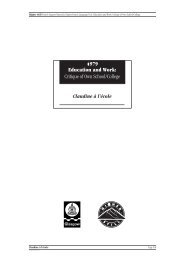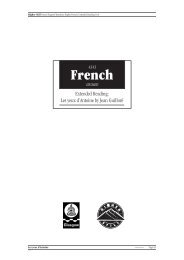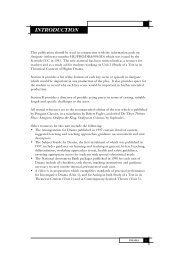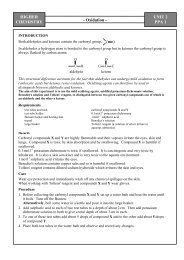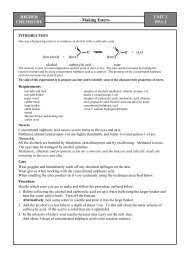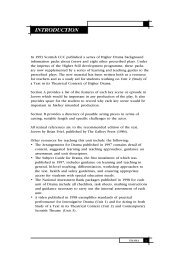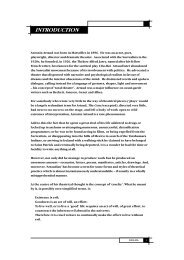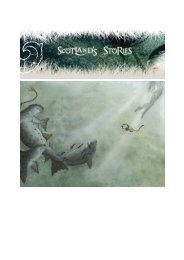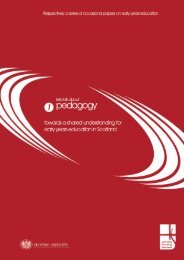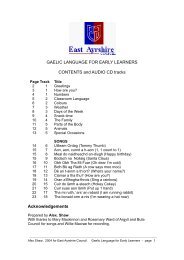Pre-Birth to Three guidance (2.3 - Education Scotland
Pre-Birth to Three guidance (2.3 - Education Scotland
Pre-Birth to Three guidance (2.3 - Education Scotland
You also want an ePaper? Increase the reach of your titles
YUMPU automatically turns print PDFs into web optimized ePapers that Google loves.
18<br />
In order <strong>to</strong> improve and promote evidence-based practice, staff could:<br />
• engage regularly in continuing professional development activity<br />
• articulate and communicate the questions that need <strong>to</strong> be explored<br />
<strong>to</strong> improve the quality of provision for children and families<br />
• share findings around what works in practice, by making use of<br />
Learning and Teaching <strong>Scotland</strong> website, Glow and other websites<br />
• subscribe <strong>to</strong> new e-bulletins, publications or websites<br />
• reflect on different aspects of practice with colleagues, children and parents and<br />
focus on what is done and why<br />
• encourage children <strong>to</strong> adopt a ‘finding-out’ culture so that research is regarded as a<br />
natural <strong>to</strong>ol.<br />
Most staff would agree that being able <strong>to</strong> explain their practice by referencing relevant<br />
research or other evidence gives confidence and credibility <strong>to</strong> both the providers and<br />
users of a service.<br />
An exciting resource for staff <strong>to</strong> begin <strong>to</strong> explore research <strong>to</strong> inform their practice is<br />
the Growing Up in <strong>Scotland</strong> study (GUS).<br />
GUS is an important long-term research project aimed at tracking the lives of a<br />
sample of Scottish children from the early years, through childhood and beyond.<br />
The study is funded by the Scottish Government and carried out by the Scottish<br />
Centre for Social Research (ScotCen). Its principal aim is <strong>to</strong> provide information <strong>to</strong><br />
support policy making, but it is also intended <strong>to</strong> be a broader resource that can be<br />
drawn on by academics, voluntary sec<strong>to</strong>r organisations and other interested parties.<br />
Focusing initially on a representative sample of 5,217 children aged 0–1 years (birth<br />
cohort) and another sample of 2,859 children aged 2–3 years (child cohort), the first<br />
wave of fieldwork began in April 2005.<br />
www.growingupinscotland.org.uk<br />
Every section of the <strong>Pre</strong>-<strong>Birth</strong> <strong>to</strong> <strong>Three</strong> <strong>guidance</strong> highlights findings from GUS that link <strong>to</strong><br />
the nine features of key principles in practice. There are also signposts <strong>to</strong> other research<br />
studies for each feature.<br />
Many organisations and policy makers also collaborate in research groupings <strong>to</strong> distil<br />
research findings in a way that makes the research more accessible <strong>to</strong> staff and others.<br />
One example of this is the Scottish Government’s Early Years Framework Research in<strong>to</strong><br />
Practice Group, which has multi-agency representation.<br />
PRE-BIRTH TO THREE: POSITIVE OUTCOMES FOR SCOTLAND’S CHILDREN AND FAMILIES<br />
USING RESEARCH TO INFORM PRACTICE






